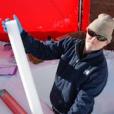Submissions to nuclear inquiries
ANSTO has made two public submissions to parliamentary inquiries with another to be submitted in February 2020 on matters relating to nuclear technologies, their peaceful applications, and the nuclear fuel cycle.

Showing 1181 - 1200 of 1513 results
ANSTO has made two public submissions to parliamentary inquiries with another to be submitted in February 2020 on matters relating to nuclear technologies, their peaceful applications, and the nuclear fuel cycle.

Particle induced X-ray emission can be used for quantitative analysis in archaeology, geology, biology, materials science and environmental pollution.
ANSTO’s Australian Synchrotron has been working on an initiative that could substantially improve radiotherapy treatment for cancer patients.
Radiocarbon dating at ANSTO has supported new archaeological research conducted by Flinders University and the University of Queensland that describes significant earth mound features used for cooking that were created by Aboriginal people in the Riverland region of South Australia.
Groundwater experts from ANSTO and UNSW have led a collaboration of Australian and American researchers to analyse the composition of deep, very old groundwater and develop a new conceptual framework that describes the degradation of carbon over time in the subsurface.
Research has helped build a record of rainfall during the late Pleistocene and Holocene, and shed light on the strategies of Indigenous Australians to cope with a changing landscape.
International interest is building in Australia’s new multi-million-dollar radioactive waste processing facility at the Sydney campus of the Australian Nuclear Science and Technology Organisation (ANSTO).

Specifications, Beryllium Filter, User Manual, Instrument reference

The Australian Synchrotron has an on-site Guesthouse for users and AS guests.

Modelling and experimentation - a powerful combination in probing mechanical properties of ion irradiated materials through nanoindentation.
Report to the independent nuclear regulator, ARPANSA, and the IAEA
Thirty years of ANSTO's unique capability in monitoring fine particle pollution provides insight on bushfire smoke.

I’m an electronics technician working with the Data Acquisition and Electronics Group to assist in the design, development, installation and commissioning of neutron instrument electronic systems as part of NBI2 project. My role also includes deve

Role at ANSTO